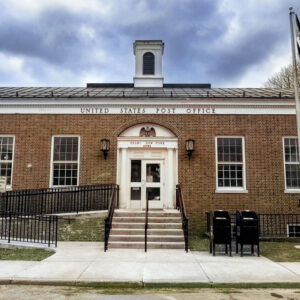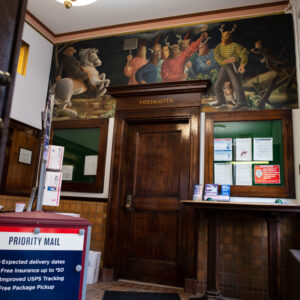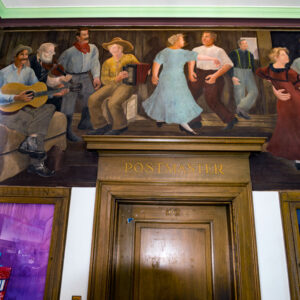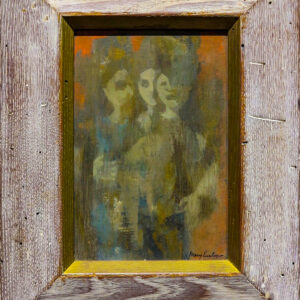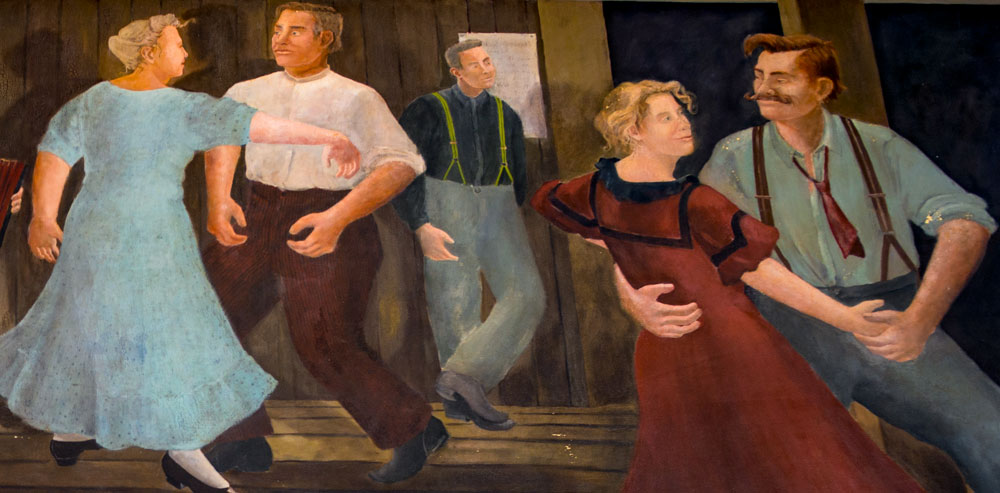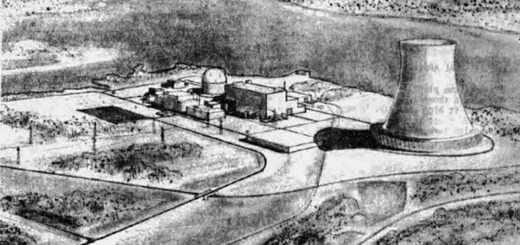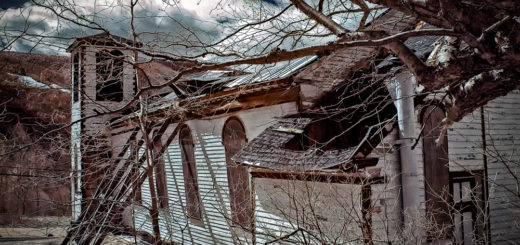Mary Earley’s Dark Angels
“I am always close to this.” –Dongshan
The artist Mary Earley has become an elusive figure in the history of art. No surprise there. Oblivion is hardly an unexpected fate for an artist or anybody else. Most of us meet it soon enough, and the few detained by popular rumor—otherwise known as Fame—are cordially received whenever they do arrive at the misty banks of Lethe. No mortal escapes that fate. Oblivion is the ultimate egalitarianism.
Even so, it’s surprising how quickly Mary Earley has been forgotten, even here in the Catskill Mountains where she made her art, even in the two post offices where her most acclaimed pieces—murals created under the auspices of a New Deal program for the arts—remain on display after more than 80 years. In that stretch of time, untold thousands have glanced up at these striking images, perhaps to be baffled for an instant before rushing off into their daily business. Few pause to give the murals the attention they warrant. Or if they do, a lack of context thwarts any effort to make an informed judgment of the artist’s achievement. It would seem that Mary Earley’s art—not to mention her name—has receded into the background of our contemporary awareness. To uncover information about her or her work is a challenge.
For example, one might inquire at the “historic post office building” in Delhi about the oil and tempera mural on its lobby wall above the postmaster’s door. It was painted by Mary Earley and installed in 1940. The mural is titled “Down-Rent War, Around 1845.”
Depicted is an ominous night scene. On the left side, a lone man mounted on a white steed enters the scene. Horse and man are accompanied by a small dog. The horse rears, casting a nervous eye back at the rider as if to say, “Are you sure about this?” For its part, the dog continues to charge toward the center of the mural, where a baleful gang of men is gathered in conspiratorial huddle. All of them are wearing sheepskin masks, some of which are adorned with animal horns, others with red feathers. The fellow on the far left of the group holds up a sign that reads “Down with Rent.” The presumed ringleader occupies the center foreground. He holds aloft a smoking torch in his left hand as he crushes a document in his right. Immediately behind him is a figure clasping what appears to be a sword. On the far right another man brandishes a long knife, while a small dog stands between his legs and staunchly looks forth. Behind them, emerging from the forest shadows, an unmasked boy—or is it an imp? —comes bounding into the scene, blowing on a tin horn. Below the mural, on either side of the postmaster’s door, are display cases housing notices of “Help Wanted” for the USPS and “Wanted” for notorious outlaws.
Surely this is one of the most unsettling post office walls in all of America. A good story must lie behind it. I was prompted to ask the cheerful clerk at the service counter if she could shed any light. Her response: “I don’t know anything about it, but if you want, go ahead and take pictures. Some people do.”
A few days later I ventured into the post office at Middleburgh and gazed upon the mural that embellishes its lobby wall. This is another work by Mary Earley called “Dance of the Hop Pickers.” Structurally the installation is identical to what is found at Delhi: a large image affixed above the postmaster’s door, flanked on either side by display cases. But the lobby in Middleburgh is brighter; more sun seems to find its way into this space. The mural evinces a style akin to “Down-Rent War” but the subject is more benign: something along the lines of a country square dance. Nine human figures comprise the scene. On the left are three rustic-looking men making music with guitar, fiddle, and old-style accordion. Standing in their midst is the square dance caller, a red bandana tied around his neck. In the center of the mural and to the right, two couples are dancing in what might be described as a lively lethargy. The vacant look on their faces, the stiffness of their limbs—this is a danse macabre. Behind the dancers, leaning against a wall, is a lone man who doesn’t quite look like he belongs. Either he is awaiting a turn or is merely biding time, his gaze directed nowhere in particular. The overall effect of the mural is a subdued eeriness reminiscent of Herk Harvey’s classic film, Carnival of Souls.
To ease the peculiar sense of dread that was arising for me, I asked the clerk behind the service counter if he could tell me anything about the mural. “I don’t know anything about that,” he said. “I’ve got work to do. Go ahead and take pictures if you want.” He disappeared into the sorting room.
While the post offices at Delhi and Middleburgh provide adequate exhibition spaces for Mary Earley’s murals, they are neither art galleries nor museums. To gain a deeper understanding of the murals and their creator, one must look elsewhere. Even the standard art references and—surprisingly enough—the internet offer precious little when it comes to finding out more about the artist Mary Earley. Beyond the skimpy biographical sketches found in the arts databases, the best source of information about her is a two-and-a-half page autobiography, written in her own hand late in her life. It is held in the archive of the Woodstock Artists Association and Museum (WAAM).
* * *
The facts of Mary Earley’s life: She was born Mary Ellen Sexton on July 8, 1900 in St. Louis, Missouri. Soon after, her family moved to Chicago, where she spent her growing-up years. As a child she loved to look at paintings in the Art Institute. It became her favorite haunt. She spent summers at her grandmother’s house in a small town on the Missouri River, memories of which filled her “with the warmest nostalgic affection.” After graduating high school, she was “sent east” for two years of college, after which she rejoined her family now living in New York City. She studied painting at the Art Students League with the artists Kenneth Hayes Miller and Kimon Nicolaides. She also learned mural painting under the direction of William C. Palmer. At some point she traveled to Italy to study the frescoes of the Italian Masters, and later went to Mexico to see murals. She also went to Cuba a few times.
On October 3, 1925, Mary Sexton married Ernest Howell Earley, an insurance company executive. They wed at the Cathedral Church of Saint John the Divine in Manhattan. Two years later she gave birth to a son, Robert B. Earley. The family came to reside at No. 1 West 85th Street, in an apartment overlooking Central Park. They maintained this as a permanent residence for the rest of their lives. In 1934 they built a summer home on Ohayo Mountain Road in Woodstock designed by the architect Albert Graeser.
In 1939, Mary Earley was awarded a commission of $690 by the Section of Fine Arts in the U.S. Treasury Department to paint the mural at the new Delhi post office. She won the designated New York prize for it in the anonymously submitted nationally juried 48-State-Competition, beating out a large field of 972 artists and 1,477 designs from mostly male artists. Her winning design for Delhi was part of an exhibition at the Corcoran Gallery of Art in Washington, D.C. in 1939 and a photo spread in Life magazine. The following year she was awarded another commission of $700 for the Middleburgh post office. As far as we know, this was her last mural.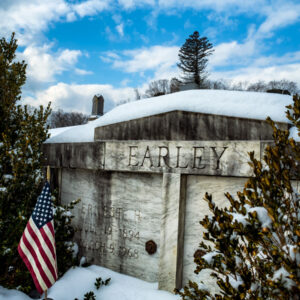
For the next four decades she concentrated on making smaller works. She joined the Sawkill Group of artists in Woodstock. Her paintings were included in a nationwide traveling exhibition. Mary Earley was included in a 1941 exhibition called “Directions of American Painting” at the Carnegie Institute. She remained active in the Woodstock arts community, regularly exhibiting her paintings. She consistently received polite approval from local newspaper critics. Her husband died in 1968. She herself died in 1992. They are interred in an elegant mausoleum on the far side of the hill in the Woodstock Cemetery.
* * *
So much for the readily available facts. Additional biographical data on the artist Mary Earley are hard to come by—as are examples of her artwork beyond the post office murals. Given the limited number of accessible paintings by Mary Earley, not to mention a lack of an “artist’s statement,” any interpretation of her life and work will be fraught with uncertainty, mystery, and doubt. In which case, her short autobiography takes on singular importance, along with the one painting by her hand—now held in a private collection—that I was able to examine: a 6 x 9 inch oil on masonite panel in a beveled, wormy chestnut frame. It bears the title “Undeliverable.”
In this small work, three feminine figures are presented as if arriving, materializing, coming forth from a realm of shadows. The frame becomes a portal. The image is done in a style that borders on the figurative, but just barely so. The three figures can hardly be distinguished from one another, as if they were separate clouds piling into a single, portentous thunderhead. Only the first figure has articulated facial features; half her face is occluded by a shroud of darkness, and the mouth seems locked in a death grimace. The face of the second figure is less defined, half hidden by the head of the first, the nose fading into a mouth that is all but vanished; one hollow eye stares directly at the viewer. The face of the third figure—in partial side profile—is less definite still, the one visible eye socket seethes with the darkness of Pluto’s Gate; her mouth has been reclaimed—or was never released from—the roiling obscurity that envelopes all three figures. These somber forms seem to have a message to communicate—from whom it cannot be said—but such tidings may not be deliverable to the human realm.
To return now to the autobiography. Mary Earley recalls summers spent with her grandmother as having been very happy, but then immediately offers a disquieting detail about the house: “There was a painting in Grandmother’s ‘parlor’ that hung over the piano, that to this day the very thought chills me. It was of angels ‘flapping’ their wings over a black angry sea with ominous foreboding clouds. It had a sinister, terrifying quality that made me quite sure I never entered the ‘parlor’ alone.”
There in that long-since-vanished Victorian parlor, the little girl who became the artist Mary Earley caught a first glimpse of the Dark Angels of Generation, which is to say, her Muses. Further glimpses doubtless followed, each serving to deepen her perception, until that indwelling host began to surge forth through her own brush and onto her canvases. If so, then “Undeliverable” might well be a frenzied self-portrait—and the Dark Angels, so ominously manifest in this painting, likely had a hand in all of Mary Earley’s work.
Even in the post office murals? Yes, but they may not be so obvious at first glance. After all, these pieces were commissioned and executed under the scrutiny of federal authorities, who did not hesitate to demand changes in subject matter and style from artists if their work did not conform to the agenda of making America feel good about itself. And it wasn’t just the Federal government that had license to meddle in the artists’ work. As historian of the postal service describes it: “Many local communities deemed the approved [mural] designs unacceptable due to theme, content, method of expression or design elements. Artists were constantly reminded that the communities were their patron and [the artists] went to great lengths to satisfy the desires of everyone involved in the project in order to save their commissions.” At least one prominent artist—Thomas Hart Benton—refused to participate in the program due to a lack of artistic freedom. In a 1936 letter to Edward Rowan, Assistant Technical Director of the Public Works of Art Project, Benton wrote: “If you can ever give me a contract in which all responsibility is mine, in which I am completely trusted to do a good job and over which no one but myself has effective rights of approval or disapproval I’ll work. Otherwise, I can’t be sure I’ll do a real piece of work.”
Mary Earley apparently did not share Benton’s qualms about artistic oversight—at least not when it came to executing these murals for the post office walls in Delhi and Middleburgh. No wonder then an architectural historian concluded: “Mary Earley’s murals dealt with historical and traditional themes and were executed in a conventional realistic style . . . carried out by an enthusiasm for the past, not by an artist with avant-garde leanings.” This is true, so far as it goes.
Yet the artist who made these murals was under obligation to her patrons. She complied, happily or otherwise, with the constraints imposed by the Treasury Department’s Section for Painting and Sculpture. In fulfilling her commissions to bring art into public spaces, Mary Earley kept her ferocious Muses—the ones so clearly depicted in “Undeliverable”—at bay. And so there are no Dark Angels to be seen in the post offices at Delhi and Middleburgh.
Or are there? Let us look again.
©John P. O’Grady
Originally appeared in Catskill Tri-County Historical Views 5.1 (Spring 2022)

